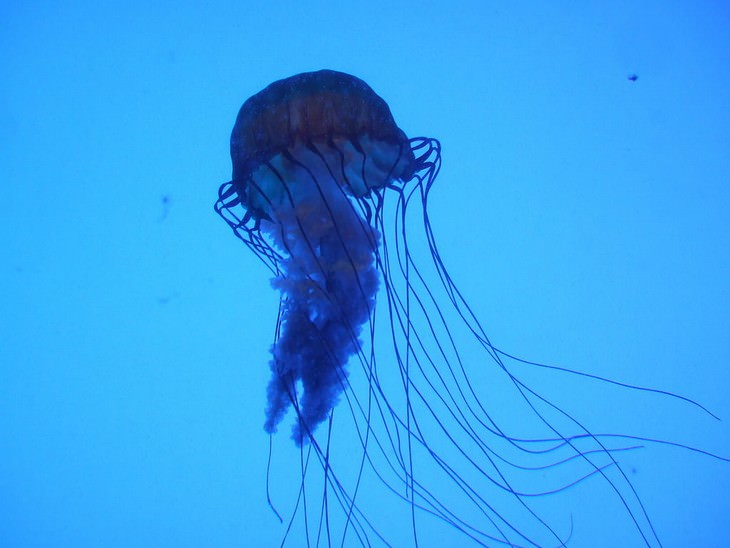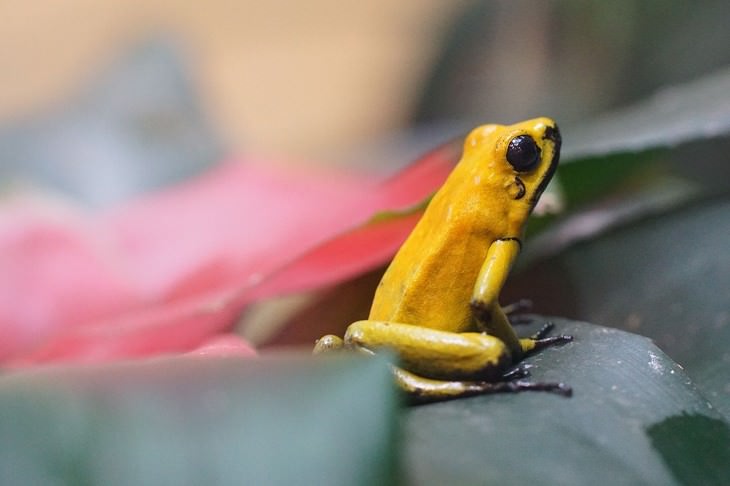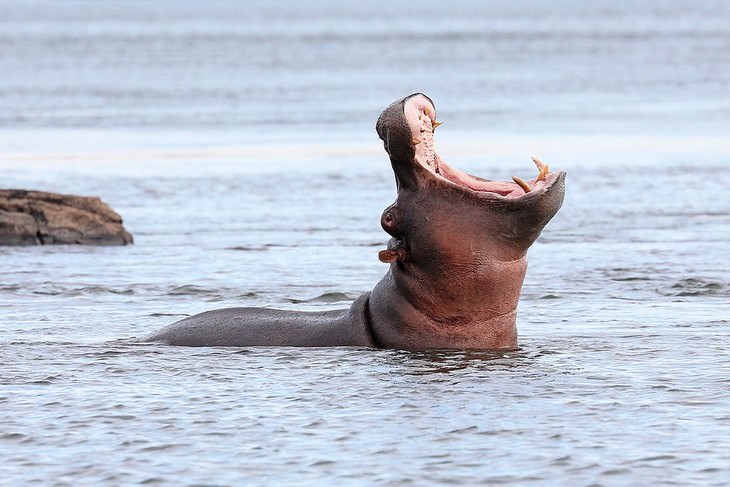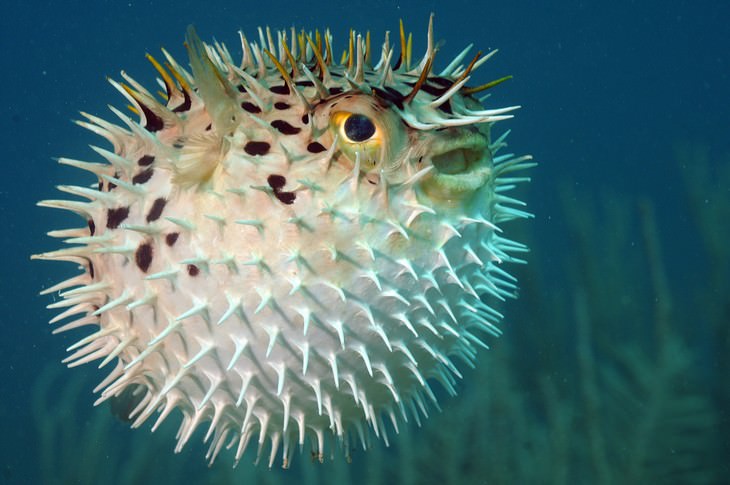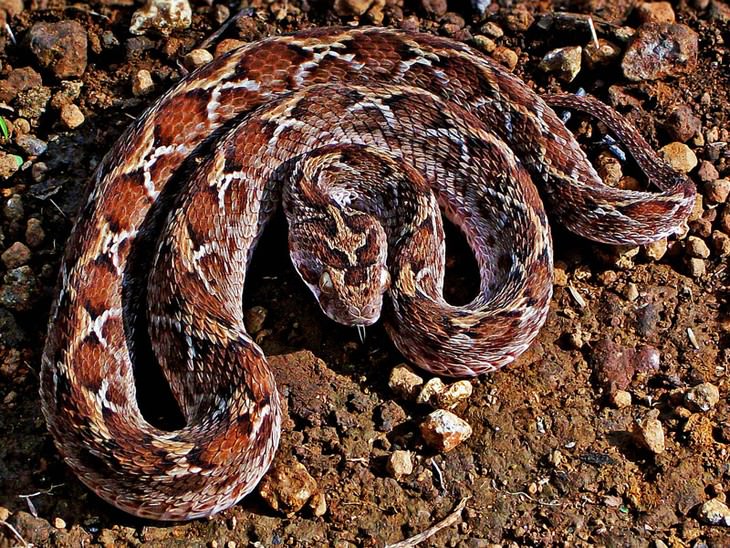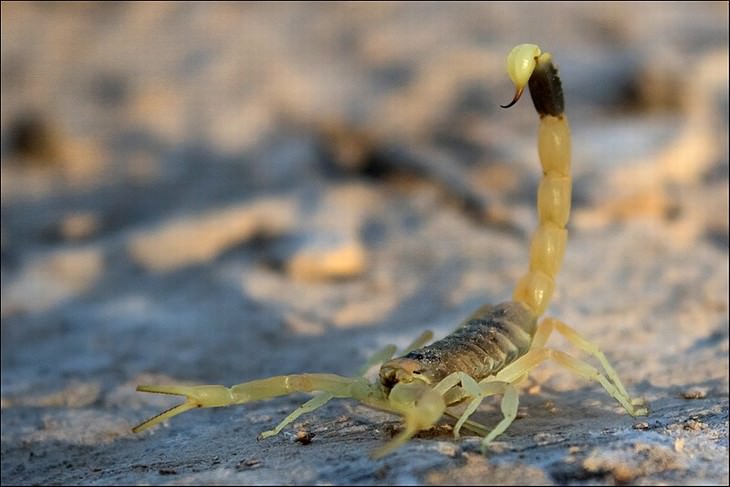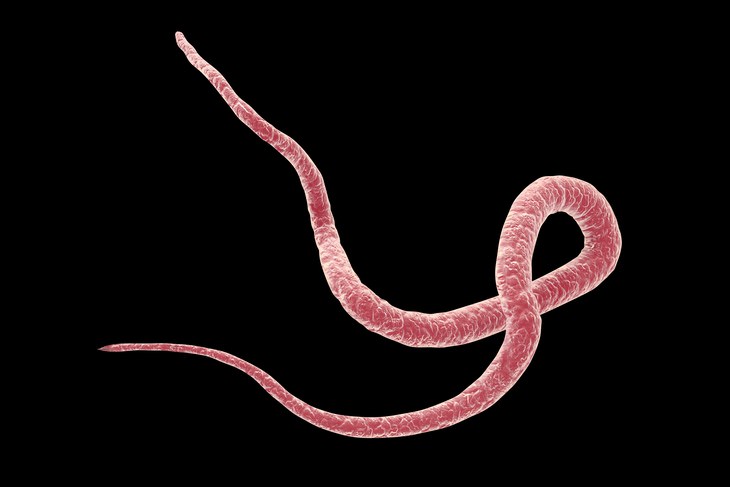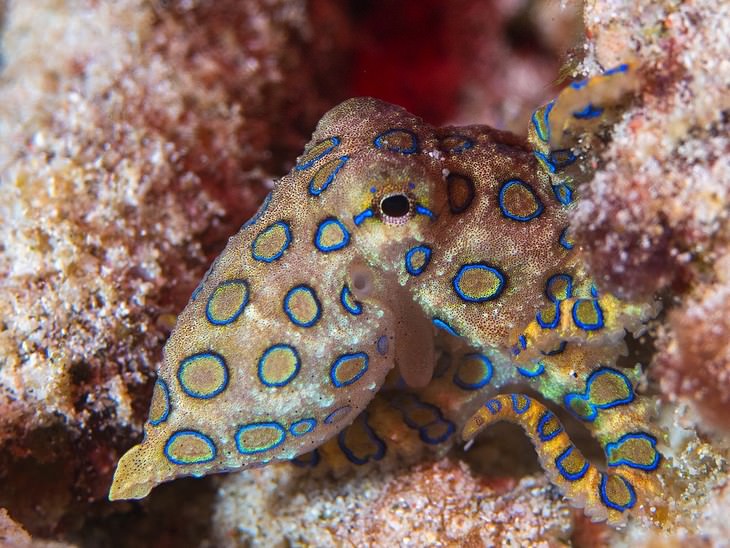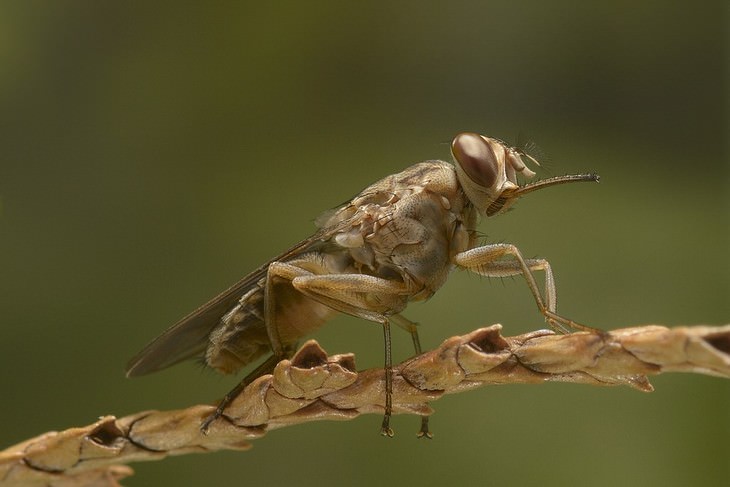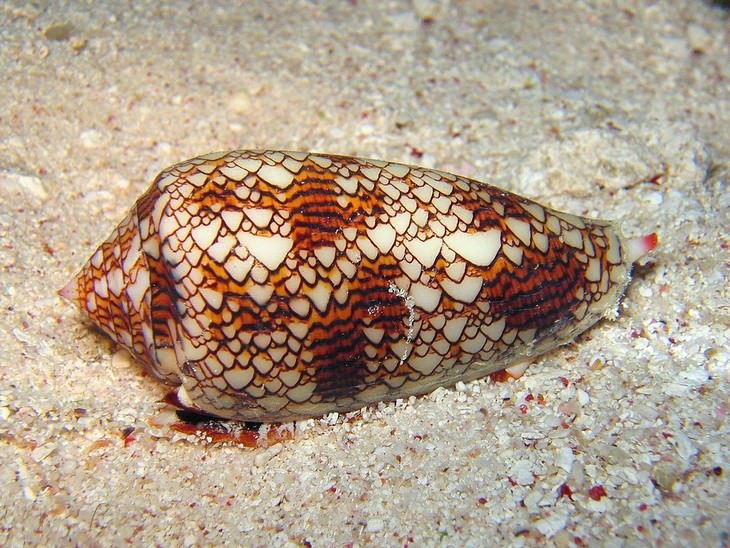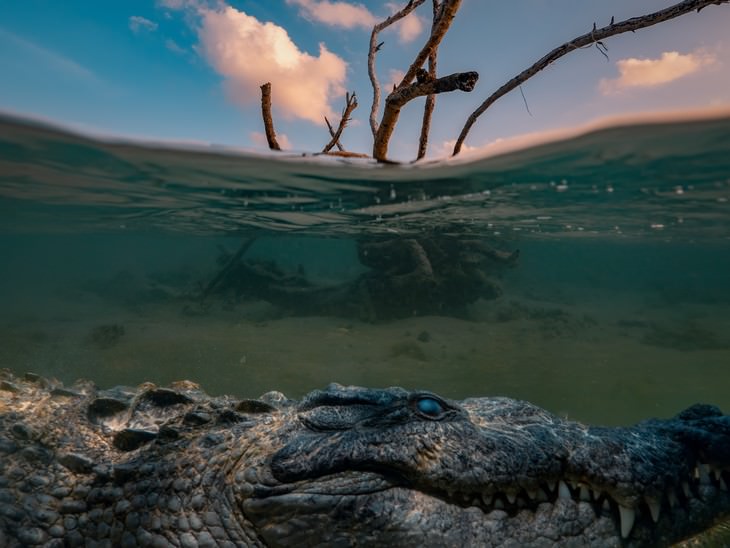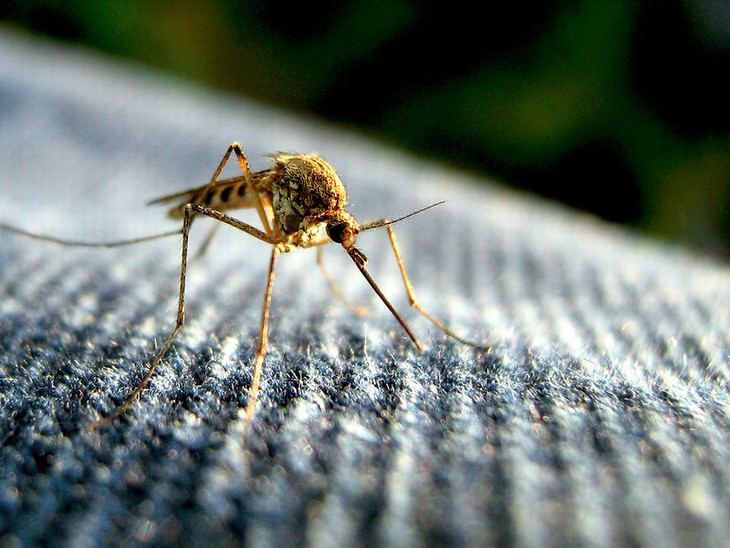1. Box Jellyfish
Behold the most venomous marine animal on the planet, the box jellyfish, which resides throughout the Indo-Pacific. You are the most likely to encounter this dangerous jelly on the western coast of Australia and the Philippines, where dozens of box jellyfish related deaths are reported each year, but there have also been known cases in Japan, Thailand, Malaysia and even Galveston Island in the Gulf of Mexico.
What makes this jellyfish so dangerous? The numerous tentacles of this seemingly-ordinary jellyfish are lined with thousands of nematocysts, which are stinging cells filled with potent toxins that paralyze the heart, nervous system and skin almost instantly. An antidote to the venom exists, but in most cases, victims get paralyzed and drown, or die of heart failure on their way to the hospital. The rare survivors report suffering from extreme pain for weeks after the encounter and lifelong scarring.
2. Cassowary
The cassowary may be a graceful creature, but it's also frequently called the most dangerous bird on the planet, probably because it's very wary of humans and fights back when approached. The enormous flightless bird is native to the tropical forests of New Guinea, the Maluku Islands, East Nusa Tenggara, and Australia. One of the three species of the cassowary is the tallest bird on the planet. Cassowaries are considered endangered species, but you can frequently encounter this rather beautiful bird in zoos around the world.
As mentioned before, the cassowary will not attack humans on its own, and the vast majority of these attacks are not fatal, with the last two cassowary-related deaths being reported in 1926 and 2019. The 2019 case is actually related to a captive cassowary, with his owner reportedly being clawed to death by the bird.
There are around 200 reported attacks each year, and all of them were the result of humans approaching the bird to feed it or people chasing, hitting or kicking the bird, so please don't make any kind of contact with the bird if you happen to encounter it in the wild or in captivity.
3. Golden Poison Dart Frog
The golden poison dart frog is another endangered species, whose habitat diminished dramatically due to deforestation. The frog lives in the rain forests bordering the Pacific coast of Colombia, and its potent poison has been used by the indigenous Emberá people for hunting for centuries.
The frog is quite tiny, only 2 inches (5 cm) long. But don't be fooled by its cheerful golden yellow color and tiny size, as the skin of this cute little frog is full of poison glands that activate immediately after you touch the frog. These glands produce a poison called batrachotoxin, with just a pin-sized amount of which is enough to kill a person.
In fact, there is enough poison in this tiny frog to kill 10 adult males, so if you're planning a trip to Colombia and happen to encounter small bright-colored frogs, it's best to admire them from distance.
4. Assassin Bugs
Compared to most bugs, these look quite adorable, don't they? Well, it may be so, but these colorful insects are actually responsible for 12.000 deaths each year. Like many other insects that bite humans, assassin bugs carry disease, namely the protozoan called Trypanosoma cruzi that causes Chagas disease, also known as trypanosomiasis.
These bugs typically bite humans in the face, particularly in the lips, while they are asleep, for which the bugs got one of their names - kissing bugs. The bite transports the parasite to the human's blood, and in a matter of months, the infection can cause severe heart and intestinal problems, and even death. The bugs live throughout South America, Central America, and Mexico, as well as the southernmost regions of the US.
5. Hippopotamus
One would think that it's not the hippo, but the more threatening looking savannah inhabitants like the lion or the rhinoceros which are the most dangerous. Alas, the clumsy-looking hippopotamus is the animal to be wary of on a safari, as they are quite aggressive and kill as many as 500 people every year.
For comparison, the number of lion-attack related deaths is 22 per year! Also, don't think that a hippo cannot catch you if you happen to encounter an angry specimen. They run twice as fast as an average human, so your best bet of avoiding one would actually be to climb a nearby tree.
6. Pufferfish
There is a variety of pufferfish species that live throughout the tropics, with a mutual feature of all these species being the ability to blow up and increase in size significantly when in danger, making it impossible for the predator to swallow. Still, there is another common feature among pufferfish - most of them are toxic, with some species being among the most poisonous vertebrates on the planet.
The skin, muscles and organs of these fish contain tetrodotoxin, a poison that so potent that there's enough poison in just one fish to kill 30 people. Still, in many countries, such as Japan, Korea, and China, the fish is considered a delicacy called fugu, with strict preparation rules supposedly being able to rid pufferfish flesh of the toxin. In Japan, there are 34-64 cases of fugu poisoning each year, nearly 7% of which are deadly.
7. Cape Buffalo
Cape buffalo live in large groups in sub-Saharan Africa. They are peaceful, grass grazing animals, but they are very protective of their young. These animals are enormous, weighing around a ton, and endangered, but they are still frequently hunted down, and they nearly always fight back when under attack.
When one of the young or an adult buffalo is injured by hunter, the latter will most likely get attacked, with their mighty horns being able to pierce a human with little to no effort. An average of 200 people die every year as a result of an encounter with cape buffalo. The animals are even known to charge on moving vehicle with a speed of 35 km/hour (22 mi/h).
8. Saw-Scaled Viper
Snakes as a whole aren't the friendliest bunch, but they, too, rarely ever attack without being threatened. Snakes kill around 50,000 people each year, and there are many extremely venomous snakes, with the black mamba and the Inland taipan being examples of snakes possessing extremely potent venom. But it's not the most venomous snake that's the most dangerous to humans. In fact, the most notorious killer snake in the world isn't the most venomous at all.
Saw-Scaled Vipers are among the smallest dangerous snakes on the planet, but they are also among the most aggressive and fast to charge. These small, striped snakes vary in coloration and live in Africa, the Middle East, Pakistan, India, and Sri Lanka, and they are known to attack more people than any other snake species, with around 20% of the attacks being lethal.
9. Deathstalker Scorpion
You know an animal is dangerous when it has the word 'death' attached to its name. The deathstalker scorpion, also known as Palestine yellow scorpion and other names, is the most venomous scorpion on Earth. It has a milky, sandy color that's especially difficult to spot in the desert. The arachnid lives throughout the dry regions of the Middle East and North Africa, and it's quite common.
The sting of the deathstalker injects the victim with a potent mixture of neurotoxins, enough to kill a child or a person with a weak immune system on the spot. To most adults, however, the sting will not be deadly, but will still be VERY painful. A victim will also be at a high risk of anaphylaxis and life-threatening allergic reactions. The scorpion kills around 1,100 people every year.
10. Ascaris Worm
One of the most dangerous animals to humans lives within the human body, how creepy is that! The parasitic Ascaris roundworms kill around 60.000 people every year, mostly children, causing a health condition known as Ascariasis. These worms inhabit the small intestine, and they're quite large compared to other roundworms, averaging at 30 cm (11 inches) long.
Worst of all, these roundworms are awfully common, with as much as 10% of the population suffering from the condition, and having Ascariasis often doesn't produce any symptoms. Ascariasis is dangerous because it can cause intestinal blockages, duct blockages, and nutritional deficiency.
11. Blue-Ringed Octopus
The blue-ringed octopus is a very small and beautiful looking animal, as it has contrasting blue-green rings that can change intensity and hue all over its body. These octopi inhabit the waters of the Indian and the Pacific oceans and are a common encounter from Japan to Australia.
These animals are quite docile, but people often handle them because they look very interesting, a major mistake, as the seemingly painless bite of the animal contains an abundance of the neurotoxin called tetrodotoxin. If not treated, death due to diaphragm paralysis occurs only a few minutes after the bite.
Bite symptoms include nausea, blindness, heart failure, respiratory arrest, and paralysis. There is enough venom in one octopus to kill 26 adult humans. Luckily, there is an increased awareness about the dangers of handling blue-ringed octopi, and only 3 recent known cases have been reported.
12. Tsetse Fly
The tsetse fly is very easy to disregard, as the little insect about the size of a housefly seems no more than a nuisance. But in reality, this blood-sucking parasite is the most deadly fly in the world, as it carries the often deadly Trypanosome protozoans, the cause of African Sleeping Sickness. The tsetse fly lives in Sub-Saharan Africa, where it is responsible for 10.000 deaths every year.
The African Sleeping Sickness ultimately infects the brain, producing terrifying symptoms like behavioral changes, tremor, paralysis, poor coordination, and other neurological and infectious symptoms. If not treated on time, the condition is deadly.
13. Cone Snails
Caribbean and Hawaiian waters hide another difficult-to-spot danger, the cone snail. There are hundreds of species of these snails, and luckily, most of them are not deadly to humans, but there are a few, like the geography cone, pictured above, that contains enough venom to kill you. The bite of these snails is venomous, shooting a cocktail of paralyzing neurotoxins in the victim's bloodstream, causing paralysis and heart arrest.
There are 30 known deaths caused by cone snails, and even more serious injuries. So, the next time you're collecting shells on the beach, make sure to skip the cone-shaped ones, just in case.
14. Saltwater Crocodile
Saltwater crocodiles are the even more aggressive and bloodthirsty cousins of the alligator. For one, these beasts are larger, being up to 23 ft (7 m) long and weighing over a ton. The crocs are incredibly fast swimmers and their massive jaws can crush the victim's bones in no time, so don't cross one of these guys if you'd like to live another day.
These killing machines live throughout the Indo-Pacific region, so you'll find them anywhere from India and Vietnam to Australia. There are hundreds of reported attacks every year, of which about half are fatal.
15. Mosquito
Meet the deadliest animal on the planet, the annoying buzzing sound of which all of you will recognize. That's right, mosquito bites cause the most human casualties every year, with statistics ranging between 750,000 and 1,000,000 deaths each year.
Mosquitos carry a number of dangerous diseases, such as malaria, encephalitis, Chikungunya, elephantiasis, yellow fever, the West Nile virus, dengue fever and the Zika virus, to name the most dangerous ones. Though many of these diseases are contained in certain geographical regions, according to the World Health Organization, about half of the world population is at risk of contracting mosquito-borne diseases. The best way to deal with this is through protective clothing, repellants, and other preventative methods.
Related Articles:

